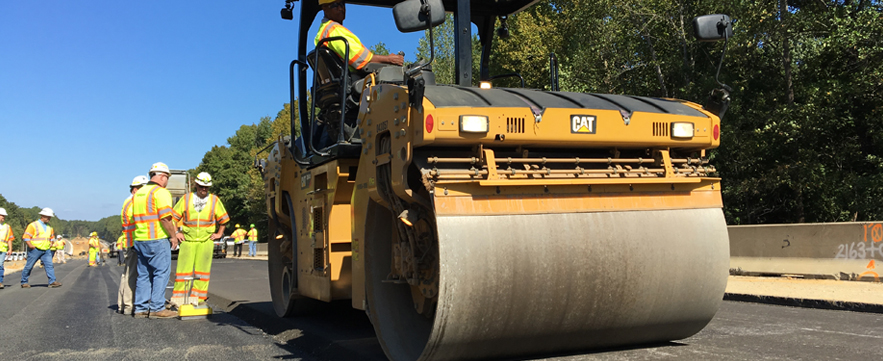Virginia RAP Project Biggest in North America
VDOT decided to go big by rebuilding 7 miles of I-64 near Williamsburg using a mix with 85 percent RAP.
BY CHUCK MACDONALD
Pavement experts estimate that approximately 10 million tons of recycled asphalt pavement (RAP) is stored by various contractors in Virginia. “I once estimated that the amount of RAP in the state is sufficient to build a highway from my office in Charlottesville to Las Vegas,” said Brian Diefenderfer, Ph.D., P.E., a pavements researcher at the Virginia Transportation Research Council, the research division for the Virginia Department of Transportation (VDOT). Based on experience gained from using pavement recycling techniques on a 3.7-mile reconstruction of I-81 in 2011 and testing on sections built at the National Center for Asphalt Technology (NCAT) Test Track in 2012, VDOT decided to go big by rebuilding 7 miles of I-64 near Williamsburg using a mix with 85 percent RAP.
“It is the biggest recycling project in North America,” said Diefenderfer.
“We estimated that using RAP on this highway saved $10 million and produced 50 percent fewer greenhouse gases than a job done using a non-recycling approach.”
The undertaking highlighted the sustainability of asphalt, America’s most recycled product.
The contractor who took on the job, Allan Myers, has approximately 1 million tons of RAP stored on its property. The company was interested in the innovative design but knew the job would not be easy. The paving used cold central plant recycling materials (CCPRM) and produced about 165,000 tons for the project.
Quality Control
“We knew we would have lots of challenges, including producing the mix that would meet the required quality control standards,” said Craig Rayfield, Quality Control Manager for Allan Myers. “We selected from 4 to 5 different piles of RAP we had collected from all over Virginia. There were extra costs to process, crush, and screen the RAP.”
Allan Myers had numerous conversations with VDOT, with both sides committed to making the project a win-win for the state and the taxpayers. The company purchased a new mobile CCPR plant for proper processing of the RAP-heavy mix. “We tested the mix by paving on our grounds and also did some night paving,” said Ben Bushey, Construction Manager. “We trained our people how to work with this mix, which did not require any other specialized paving equipment. We also noted that the mix was temperature sensitive, so we did not make any mix or pave when the temperature was less than 50 degrees.”
Construction
"We used emulsion to seal and protect the CCPRM after compaction, which helped the curing process and allowed us to protect the material from weather and construction traffic," said Bushey. "Proper compaction and curing were vital for the CCPRM to achieve the best performance."
Most of the construction was done during 2018 as the Allan Myers team built a 12-inch-thick subbase using recycled materials in an FDR process. The next level was a 2-inch open-graded-drainage course, followed by 6 inches of the CCPRM, followed by a 2-inch SMA-19 material. The final course was a 2-imch SMA-12.5.
The CCPRM paving used cold materials plus foamed asphalt as a recycling agent. The asphalt binder was heated, but the mixture went into the paver at ambient temperatures. The contractor placed the CCPR on a new layer produced from crushed concrete and stabilized with cement using full-depth reclamation (FDR) to form a stiff subbase.
The finished interstate includes 3 lanes in each direction, widened from the original 2 lanes, and shoulders. VDOT has placed sensors in the pavement to document the performance of the RAP-heavy CCPR mix. “This was an innovative job,” said Rayfield. “We wanted to be a part of it to see if it was possible to build a quality highway using a high amount of recycled materials. It was definitely a green project.”
Chuck MacDonald is a writer living in Annapolis, Md. He has been a frequent contributor to projects for NAPA and other organizations
